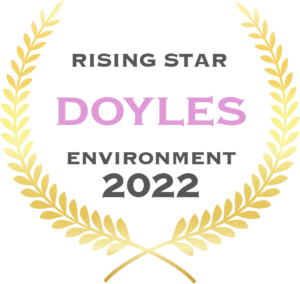The Planning and Environment Court handed down its decision on 16 December 2021, wherein Thynne + Macartney successfully represented Noosa Shire Council in respect of its decision to refuse a development application for a permit to develop land at 2-18 and 20 Hofmann Drive, Noosaville into a precinct called “Noosa Marketplace”.
The matter was: Noosa Spotlight Property 2 Pty Ltd v Noosa Shire Council [2021] QPEC 77.
Background
The Appellant, Noosa Spotlight Property 2 Pty Ltd (Noosa Spotlight), lodged a development application for a permit to develop the land for Noosa Marketplace. The development application was subject to impact assessment and sought approval for “…offices, large format retail style showrooms, small incubator tenancies, healthcare services, food and drink outlets and an indoor sport and recreation centre.”
Noosa Spotlight, part of the larger Spotlight Group, which operates the Spotlight, Anaconda and Harris Scarfe stores across Australia, provided expressions of interests for occupying some tenancies of the proposed development. Spotlight’s expression of interest advised it would require 2,700m2 of space to operate, and Anaconda required 1,800m2 to operate.

Issues
The parties agreed on a list of issues the Court was required to determine, which are addressed below.
Was there a need?
In respect of the large format retail component of the development application, the Court accepted the economist’s expert evidence that larger format retail showroom space is in short supply in the region. However this undersupply was not capable of justifying the proposed development. As to the other tenancies, the Court found that on the evidence available, it could not be established that there was an economic need for such uses.
The Court found that the locality would not introduce any benefit to the community stemming from an increase in competition between vendors and goods that were available currently in the trade area and Noosa residents would not think it unreasonable to travel to Maroochydore or Kawana to shop at Spotlight or Anaconda in person.
In regard to community need, the Court found that, in respect to competition, choice and convenience the addition of the proposed development to the locality would not introduce any benefit to the community stemming from an increase in competition between vendors and that the goods on offer were generally already available within the trade area and residents of Noosa would not think it unreasonable to travel to Maroochydore or Kawana to shop (in person) at Spotlight or Anaconda. Other factors presented were escape expenditure, which the Court determined there would always be a level of, as well as generating employment, which the extent of was speculative.
Given the findings on economic and community need, the Court was not satisfied there existed any planning need either.
Was the proposed land use appropriate?
The Court found that the proposed development was not an appropriate use of the land, in the context of the relevant provisions of Shaping SEQ, Noosa Plan 2006 and Noosa Plan 2020.
Was the built form, design and layout of the proposed development acceptable?
The consideration of this issue involved addressing the question of what the ‘Noosa Style’ was; a concept that appears throughout both Noosa Plan 2006 and Noosa Plan 2020. The Court, assisted by the architecture experts for both Noosa Spotlight and Noosa Shire Council, found that Noosa Style, “… places a strong emphasis on a development not dominating a site but instead demonstrating the effective integration of built form and landscape.”[1]
Ultimately, the Court determined that the proposed development was an unacceptable architectural response to the planning scheme provisions under both the Noosa Plan 2006 and Noosa Plan 2020.
What was the impact of Noosa Plan 2020?
The Court found that, on review of the relevant assessment benchmarks of both Noosa Plan 2006 and Noosa Plan 2020, that “…the provisions of the 2020 Scheme confirm in a more contemporaneous form, what was already the case under the 2006 Scheme, the proposed development is inappropriate when compared to the Council’s planning for the Land, the locality and the Shire more generally as reflected in both the 2006 and 2020 Planning Schemes. [250] I find it is appropriate to and I have given considerable weight to the 2020 Scheme in this case. Having done this and in answer to the question posed by Issue Four, I am satisfied that the 2020 Scheme does not support an approval of the proposed development.”[2]
Is Noosa Plan 2020 misconceived or not soundly based?
Noosa Spotlight mounted an argument that relevant provisions under Noosa Plan 2020, with respect to large format retail showrooms, were not soundly based as they did not make adequate provision for large format retail showrooms to meet the needs of the community. This was based on economic need reports Council had available to it at the time of drafting Noosa Plan 2020.
The Court stated that as a matter of common sense, it is usual for local governments to “…take into account a raft of measures beyond economics” when drafting planning schemes.[3] The Court also found that although it did not adopt the full extent of retail/showroom floorspace recommendations in the economic reports, this was not a sufficient basis to support the finding that was sought by Noosa Spotlight.
The Court accordingly made a finding that Noosa Plan 2020 was soundly based.
Issue 8 – Other relevant matters
The remaining three relevant matters raised by Noosa Spotlight not already considered above were:
- That the proposal would not unreasonably adversely affect other existing or planned centres and would not disrupt the centres strategy under the Noosa Plan 2006;
- Approval of the proposed development would assist in preserving industrial zoned land for industry use, advancing overall outcomes sought in Noosa Plan 2006; and
- The proposal can be carried out without any unacceptable impacts.
The Court considered these matters and found that the first matter did not carry much weight and rejected the second and third matters.
Conclusion
In the face of strong, clear and consistent statements of planning intent, developers can face an uphill battle for the approval of developments that are inconsistent with planning schemes. It is not enough to demonstrate the proposal would not have any unreasonable impacts and some level of need; there must be a level of need such that it cannot be ignored.
Where their vision for a project might not be entirely consistent with the planning instruments, developers should focus at preparatory stages on ameliorating potential impacts and demonstrating high levels of economic, community and planning need.
For Councils, consistency in planning intent and long-term land use planning can afford great protection, as was the case here.
[1] Judgment at para [214].
[2] Judgment at para [249]
[3] Judgment at para [255].
About Tim
Tim has more than 20 years’ experience and leads Thynne + Macartney’s Planning + Environment team. He is a specialist in planning and environment law with expertise in litigation and advice concerning development management and compliance in this complex and changing area of law. With experience in enforcement and prosecution proceedings for development and environmental offences, Tim also drafts and negotiates infrastructure agreements, responds to compulsory acquisitions, Land Court litigation and advises on approvals and compliance with Environmental Authorities. He works closely with his clients to understand their objectives and to guide them through the intricacies of planning and environment law to create the best result with minimal delay or obstruction.

About Holly
Holly is a lawyer in the Planning + Environment group at Thynne + Macartney. She assists clients to navigate the complexities of planning and environment law at all stages of their projects. Working closely with Tim Quirk who leads the Planning + Environment group, Holly advises developers and local governments.






